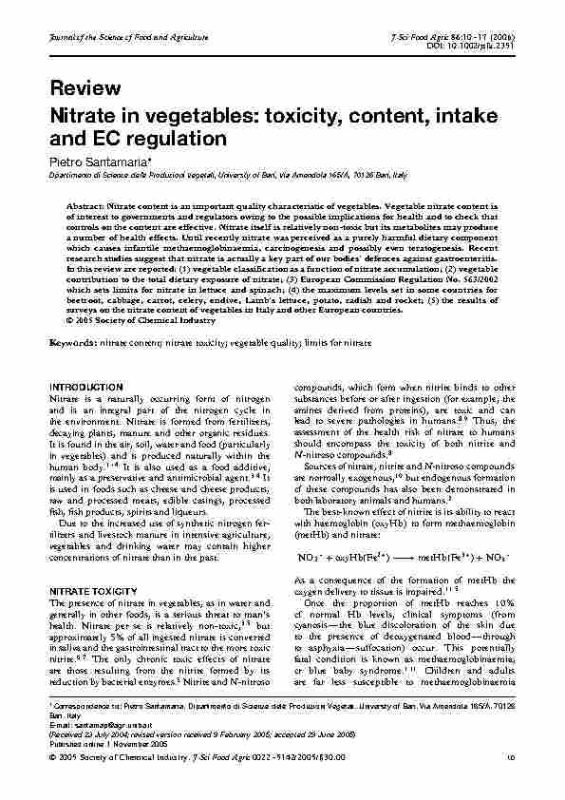Article Nitrate in vegetables_toxicity, content, intake
27/08/2024
DOCUMENT DESCRIPTION
Abstract: Nitrate content is an important quality characteristic of vegetables. Governments and regulators are particularly interested in vegetable nitrate content due to its potential health implications and to ensure that controls on nitrate levels are effective. While nitrate itself is relatively non-toxic, its metabolites may produce various health effects. Historically, nitrate was perceived as a purely harmful dietary component, linked to conditions such as infantile methemoglobinemia, carcinogenesis, and possibly teratogenesis. However, recent research suggests that nitrate plays a key role in the body’s defense against gastroenteritis.
This review covers: (1) the classification of vegetables based on nitrate accumulation, (2) the contribution of vegetables to total dietary nitrate exposure, (3) European Commission Regulation No. 563/2002, which sets limits for nitrate in lettuce and spinach, (4) the maximum nitrate levels established in some countries for beetroot, cabbage, carrot, celery, endive, lamb’s lettuce, potato, radish, and rocket, and (5) the results of surveys on the nitrate content of vegetables in Italy and other European countries.
© 2005 Society of Chemical Industry


